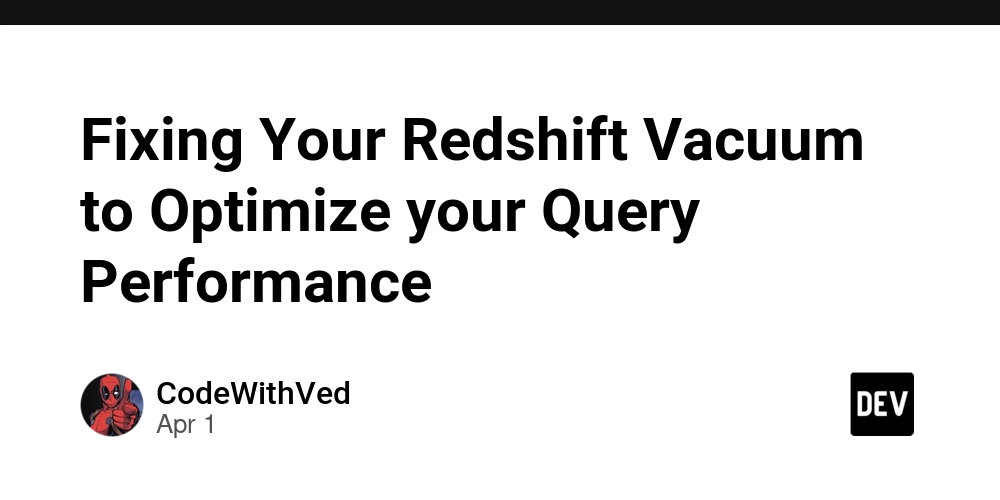Fixing Your Redshift Vacuum to Optimize your Query Performance
Even if you’ve carefully planned out your schema, sortkeys, distkeys and compression encodings, your Redshift queries may still be awfully slow if you have long running vacuums taking place in the background. The number one enemy for query performance is the vacuum—it can slow down your ETL jobs and analytical queries by as much as 80%. It is an I/O intensive process that sorts the table, reclaims unused disk space, and impacts all other I/O bound processes (such as queries against large tables). This guide can help you cut down the time it takes to vacuum your cluster (these steps lowered our vacuum time from 10–30 hours to less than 1 hour). This guide assumes you’ve chosen sortkeys and distkeys for your table, and are vacuuming regularly. If you are not doing these things, use this guide and this guide to get them set up (the flow charts are quite helpful).

Even if you’ve carefully planned out your schema, sortkeys, distkeys and compression encodings, your Redshift queries may still be awfully slow if you have long running vacuums taking place in the background.
The number one enemy for query performance is the vacuum—it can slow down your ETL jobs and analytical queries by as much as 80%. It is an I/O intensive process that sorts the table, reclaims unused disk space, and impacts all other I/O bound processes (such as queries against large tables). This guide can help you cut down the time it takes to vacuum your cluster (these steps lowered our vacuum time from 10–30 hours to less than 1 hour).
This guide assumes you’ve chosen sortkeys and distkeys for your table, and are vacuuming regularly. If you are not doing these things, use this guide and this guide to get them set up (the flow charts are quite helpful).











































































































































































![[The AI Show Episode 142]: ChatGPT’s New Image Generator, Studio Ghibli Craze and Backlash, Gemini 2.5, OpenAI Academy, 4o Updates, Vibe Marketing & xAI Acquires X](https://www.marketingaiinstitute.com/hubfs/ep%20142%20cover.png)




























































































































![[DEALS] The Premium Learn to Code Certification Bundle (97% off) & Other Deals Up To 98% Off – Offers End Soon!](https://www.javacodegeeks.com/wp-content/uploads/2012/12/jcg-logo.jpg)


![From drop-out to software architect with Jason Lengstorf [Podcast #167]](https://cdn.hashnode.com/res/hashnode/image/upload/v1743796461357/f3d19cd7-e6f5-4d7c-8bfc-eb974bc8da68.png?#)








































































































.png?#)

































_Christophe_Coat_Alamy.jpg?#)
 (1).webp?#)





































































































![Apple Considers Delaying Smart Home Hub Until 2026 [Gurman]](https://www.iclarified.com/images/news/96946/96946/96946-640.jpg)
![iPhone 17 Pro Won't Feature Two-Toned Back [Gurman]](https://www.iclarified.com/images/news/96944/96944/96944-640.jpg)
![Tariffs Threaten Apple's $999 iPhone Price Point in the U.S. [Gurman]](https://www.iclarified.com/images/news/96943/96943/96943-640.jpg)




































































































































